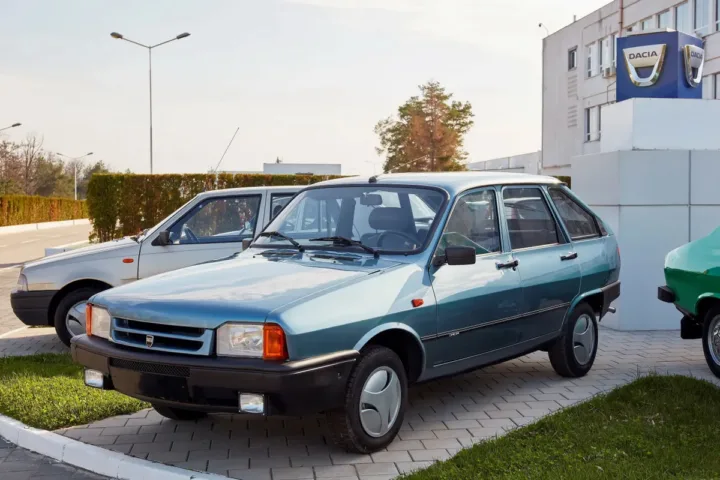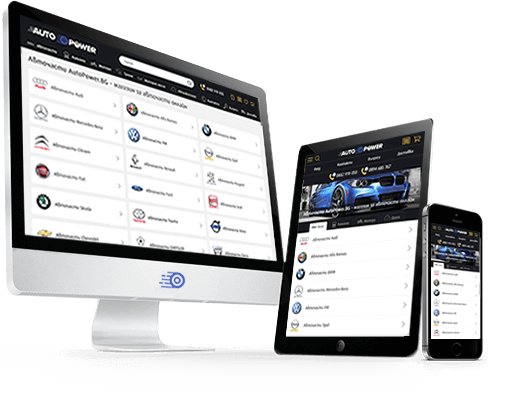Dacia 1325 Liberta: the road to liberation
The history of Dacia and Bulgarreno started at the same time in 1966, when Bulgaria and Romania signed contracts with Renault. However, production in our northern neighbor differs from ours in several key aspects - although the plant built there came into operation only in 1968, it is much larger, better equipped and with a much greater capacity. The production itself is carried out on a closed cycle and does not depend on external supplies, and the Dacia 1300, which is analogous to the modern Renault 12 for its time, began to be produced simultaneously with it. That is why the resource of both the plant itself and the specific model is very high, and it is no coincidence that it has remained on the conveyor for more than a quarter of a century piese auto online.

At the end of the 1970s, Renault's contract with Romania expired, but the French side made a proposal to extend it, with the idea being to start production of the Renault 18 instead of the Dacia 1300. However, the ruling Communist Party believed that Romanian automakers had already gained enough experience to cope with all future challenges on their own. As a result, a whole series of interesting experimental developments appeared in the 1980s - from a compact city car to an attractive sports coupe, as well as, of course, numerous variations based on the standard sedan. The genetic resource of the Renault 12 is indeed very large, but still not infinite. That is why, as early as the mid-1980s, the factory designers offered a version of a completely new, modern car, with the numerical index 1325. Here, unfortunately, the party experts again had the decisive word, and this ambitious project remained only on the drawing board. According to the instructions given from above, maximum savings must be realized, which is why the future Dacia must retain as many structural elements from the 1300 model as possible.
However, despite the imposed restrictions, the factory specialists managed to create a fairly decent car with a new, elegant line, which was an important step forward in the stylistic evolution of Dacia. The design of the Renault 12, designed back in the mid-1960s, turned out to be very suitable for transformation into a hatchback (which was not in the range of the French prototype), and this idea was practically realized in the late 1980s with the previous model 1320.
The front of the Dacia 1325 is notable for the redesigned grille and the new bonnet, as well as the redesigned engine compartment (thus achieving better shock absorption in the event of a frontal impact and therefore better protection for the driver and passengers), as well as rectangular headlights combined with indicators and appropriate side lights. By reworking the rear, a reduction in the aerodynamic coefficient from 0.45 on the Dacia 1300 to 0.33 on the new model was achieved (at that time the optimal coefficient worldwide was around 0.3).
The styling of the rear is completely different from that of previous models and largely approaches the current Western models of the time. The car's curb weight has been reduced by eliminating the areas covered by the front and rear bumpers, which ultimately contributes to reducing fuel consumption.
The Dacia 1325 is available with two types of engines, 1289 and 1397 cc. cm. The camshafts are mounted in the cylinder head and are driven by a Piretti timing belt, which is serviced every 50,000 km. At the same time, a similar solution was widely used by companies such as Renault, Volkswagen, Ford and others, and for this purpose the configuration of the combustion chamber, the distribution scheme, the oil pump and the carburetor were modified. In the versions with the 1397 cc engine, the installation of a two-chamber carburetor, based on the one used by Oltcit, is envisaged, which leads to a decrease in fuel consumption and a reduction in harmful emissions. The current international regulations on noise levels are complied with. The dashboard includes some new instruments such as a tachometer and displays for showing oil pressure and coolant temperature. The ventilation and heating of the cabin are at a much better level than those of previous models, and air conditioning is also available as an option.
In terms of style, the Dacia 1325 has its prototype in the person of the 1320 model - the first company hatchback, based on the station wagon version, which was produced in small series from 1987 to 1990. The 1325 model was produced between 1991 and 1996, which coincided with the beginning of democratic processes in the country. This is where its commercial name Liberta comes from, which means "freedom" in Romanian.
- 2025-12-06 - Toyota GR GT: Supra's bigger "brother" comes with a V8 engine
- 2025-12-05 - Opel OSV 40: the battle for safety began half a century ago
- 2025-12-04 - 60 years since the premiere of the first Opel GT
- 2025-12-03 - The Fabia lacks subtlety
- 2025-12-02 - The big test: what are the best winter tires for 2026?
- 2025-12-01 - Used car inspection: Porsche 911 (992)
- 2025-11-30 - Nikola Tsolov with a phenomenal performance in his first Formula 2 start
- 2025-11-29 - Nikola Tsolov with an impressive result in his first Formula 2 qualifying
- 2025-11-28 - Used car inspection: Porsche 911 (997)
- 2025-11-27 - Used car inspection: Porsche 911 (996)












